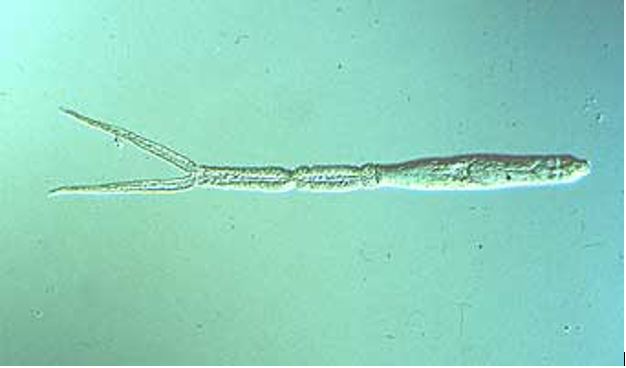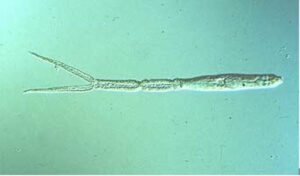Swimmer’s Itch 101: What Every Lake Lover Needs to Know

By Ava Schimnowski, Aquatic Plant Management Specialist Individual Placement /AmeriCorps member at Minnesota Department of Natural Resources Division of Fish and Wildlife
As the weather warms up and people begin to spend time in Minnesota’s lakes, it’s important to highlight a common ailment that plagues swimmers: Swimmer’s itch. This temporary skin rash is caused by an allergic reaction to microscopic parasites carried by snails, semi-aquatic mammals, and birds.

Life Cycle
Swimmer’s itch has a complicated life cycle. Here’s a breakdown:
- It starts as a worm (parasite) in the intestinal lining of aquatic birds and mammals (hosts).
- The worms lay eggs inside the host animal.
- The eggs are eliminated by the host and drop to the bottom of the lake.
- Those eggs hatch into miracidia (larval stage of trematode worms) that swim around in the water until they find a snail.
- Once the miracidia find a snail, they live inside and develop into cercariae (free-swimming larval stage).
- Next, the snails release the cercariae back into the water where they look for another host. These can include aquatic birds, mammals, or… humans.
- When the cercariae find a potential host, they burrow into the host’s skin. If the host is suitable, the life cycle starts all over again.
- Luckily for us, humans are not a suitable host and the cercariae die after penetrating the skin. Our body’s immune system detects the organism as a foreign protein, attacking and killing it shortly after it penetrates the skin. The itching and welts are not caused by the burrowing of the organism, but by an allergic reaction.

Protecting yourself from swimmer’s itch
Now that we understand the mechanism of the ailment, here are some effective protection tips:
- Apply a water repellant substance like petroleum jelly or waterproof sunscreen to reduce the ability of the cercariae from penetrating the skin.
- Dry off with a towel as soon as you exit the water. Don’t let the water evaporate off your skin, the organism in the water droplets will stay on you.
- Keep waterfowl away from your dock and shoreline. Don’t feed ducks and geese from your dock, as this attracts them and increases the risk of swimmer’s itch.
- Avoid areas where swimmer’s itch is a known problem.
- Copper sulfate may be used to kill the snails which are an intermediate host of the parasite. A permit from the DNR is required to use copper sulfate. It is important to note that the copper sulfate will only kill the snails present at the time of application, any snails which enter the area afterwards will not be affected.
By taking these precautions, you can enjoy Minnesota’s beautiful lakes armed with this knowledge. Stay safe and happy swimming!
Resources: